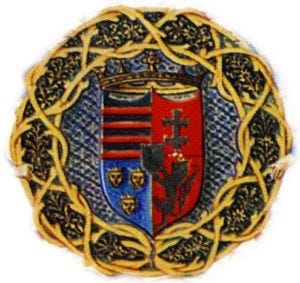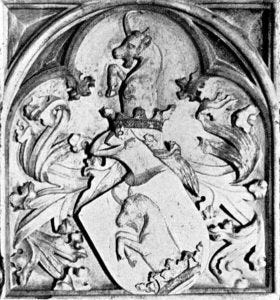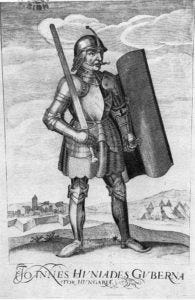Szilágyi Mihály, the kingmaker
Szilágyi Mihály of Horogszeg (c. 1400-1460) was a Hungarian general, regent of Hungary, count of Beszterce (Bistrița, Bistritz, also Nösen), head of the Szilágyi-Hunyadi league and chief captain of the lower parts of Hungary, voivode of Transylvania. His person was very important in making Hunyadi János and his son, Hunyadi Mátyás alias King Matthias Corvinus, powerful. In this way, he contributed greatly to the defense of the Kingdom of Hungary and Western Europe against the onslaught of the Ottoman Empire. Please note that I am using the Eastern order of names for Hungarians, with surnames coming first.
During the first third of the fifteenth century, the Ottoman Empire’s strength was tied up in wars and internal political tensions in Asia Minor, but having overcome the crises, the Ottoman state continued its European expansion with renewed vigor.
After the Empire had conquered a significant part of the Balkans, a new chapter in the history of Hungarian-Ottoman wars began in the 1440s. During the period of raids and sieges, several warlords made their names in history, among them Hunyadi’s brother-in-law, Szilágyi Mihály, whose name is in Hungarian historical memory mainly because he was the captain of the castle during the triumph of Nándorfehérvár (Belgrade) in 1456.
Szilágyi and Hunyadi János
Indeed, Szilágyi’s success was closely linked to the rise of the military genius Hunyadi János. Szilágyi belonged to an ordinary aristocratic family that took its name from the village of Horogszeg, which was their estate in the county of Temes. His sister Szilágyi Erzsébet was the wife of Hunyadi János. Szilágyi began his career in the service of his brother-in-law as the vice Comes of Torontál County.
We do not know if he was involved in the fight against the peasant uprising of Budai Nagy Antal in 1437, but it is more likely that he was among the Székely troops who helped to put down this most devastating rebellion. You can read more about the Hungarian Székely border guards of Transylvania here:
https://www.hungarianottomanwars.com/essays/who-were-the-szekelys/
He had only one brother, Osva, and his two sisters were Erzsébet and Zsófia. He married Báthori Margit around 1440-45. They probably had several children, but none of them reached adulthood. We know that Szilágyi fought against the Turks in the battle of Várna and the second battle of Rigómező (1448). You can read more about these battles here:
https://www.hungarianottomanwars.com/1372-1490/battle-of-kosovo-polje-1448/
On 29 May 1453, Byzantium was brought to its knees by the armies of the Ottoman Sultan Mehmed II, sending shock and fear throughout Europe. The Kingdom of Hungary prepared for the inevitable Ottoman attack by strengthening the fortress system on its southern border.
At the same time, Pope Callixtus III (1455-58) was trying to use all the resources of the Church to organize a crusade. Although Buda was informed in April 1456 that the Turks had begun the campaign against Hungary, a significant part of the high priestly and baronial bands did not march to the southern frontier. Similarly, the German and Bohemian crusaders recruited in Europe, mostly Germans and Czechs, were only near Vienna at the time.
The Ottoman army consisted of nearly 100,000 men, supported by their navy on the Danube. Under the leadership of Sultan Mehmed II, they reached the walls of Nándorfehérvár (Belgrade) at the end of June 1456. Inside the castle, Szilágyi Mihály commanded the defense of about 7,000 men, while Hunyadi János was outside the castle with 10,000 soldiers. Another 25 to 30,000 armed peasants, recruited by the Franciscan preacher St John of Capistrano in the southern counties of Hungary, gathered at Zalánkemén. The siege began on 4 July and lasted almost three weeks.
Keep reading with a 7-day free trial
Subscribe to Hungarian History 1366-1699 to keep reading this post and get 7 days of free access to the full post archives.






